
Lisa Grossman
Astronomy Writer, Science News
Lisa Grossman is the astronomy writer for Science News. Previously she was a news editor at New Scientist, where she ran the physical sciences section of the magazine for three years. Before that, she spent three years at New Scientist as a reporter, covering space, physics and astronomy. She has a degree in astronomy from Cornell University and a graduate certificate in science writing from the University of California, Santa Cruz. Lisa was a finalist for the AGU David Perlman Award for Excellence in Science Journalism, and received the Institute of Physics/Science and Technology Facilities Council physics writing award and the AAS Solar Physics Division Popular Writing Award. She interned at Science News in 2009-2010.

All Stories by Lisa Grossman
-
 Planets
PlanetsWelcome to moon rock central
A Science News reporter’s visit to NASA’s moon-rock lab shows the hyper-pristine conditions in which these rocks are kept — and why that’s so important.
-
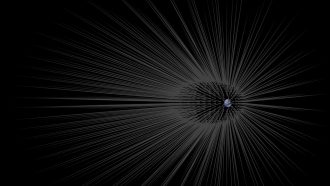 Physics
PhysicsIf dark matter particles could kill us, they would have already
Dark matter is a mysterious substance. The fact that no one has been killed by it suggests it is relatively small and light.
-
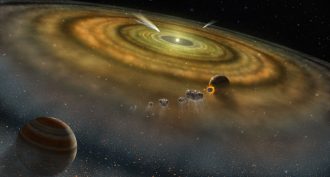 Planets
PlanetsWhat do you call a moon that escapes its planet? A ‘ploonet’
Giant planets in other star systems might lose their moons, creating new planets. And if moons do go rogue, current telescopes may be able to find them.
-
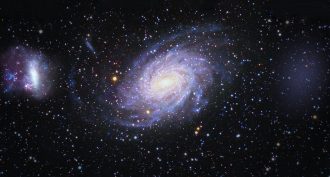 Space
SpaceCaught: A ghost galaxy that may have hit ours long ago
Astronomers think they’ve found a galaxy that hit the Milky Way. The collision took place millions of years ago, leaving ripples in our galaxy.
-
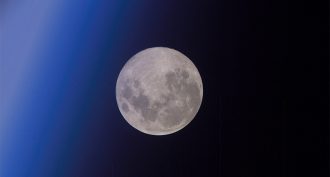 Physics
PhysicsMeteorites may be excavating lunar water
When meteorites hit the moon, water is released from the moon’s soil. That suggests the moon has water buried all across its surface.
-
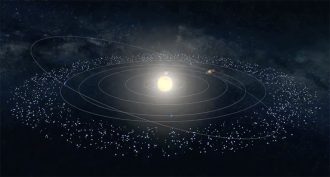 Space
SpaceSome dust in Earth’s atmosphere may hail from beyond Neptune
Bits of space debris in Earth’s atmosphere may come from the Kuiper Belt. This zone of dust and ice sits just beyond Neptune.
-
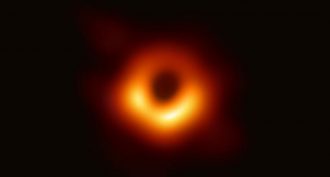 Physics
PhysicsHere’s the first picture of a black hole
The Event Horizon Telescope imaged the supermassive beast lying some 55 million light-years away in a galaxy called M87.
-
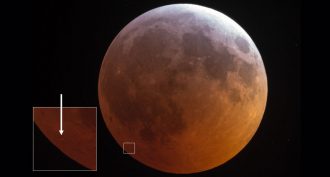 Space
SpaceCaught on camera: A small rock hit the moon
Photographers documented a rocky impact during January’s total lunar eclipse.
-
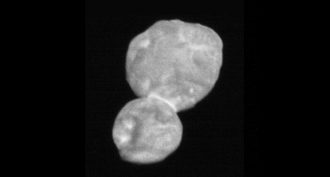 Space
SpaceThere’s a snowman in space
The New Horizons spacecraft snapped pics of the space rock on New Year’s Day.
-
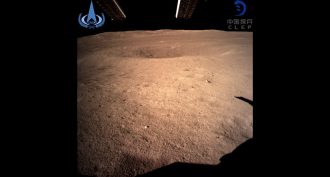 Space
SpaceChina landed a spacecraft on the far side of the moon
China just brought down a lander and rover on the far side of the moon. Let the science begin!
-
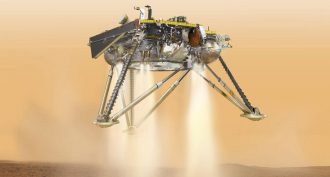 Space
SpaceQuake-scouting lander safely touches down on Mars
NASA’s InSight lander has just arrived safely on the Martian surface. Its two year mission is to record any ‘Marsquakes’ and other signs of the planet’s geologic activity.
-
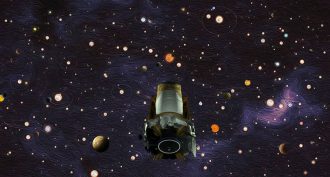 Space
SpaceR.I.P. Kepler, the planet-hunting telescope
It’s lights out for this spacecraft, after finding more than 2,700 exoplanets throughout our galaxy.